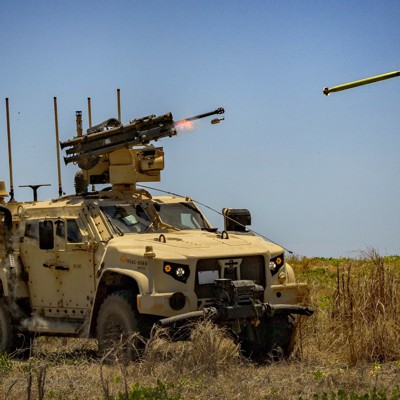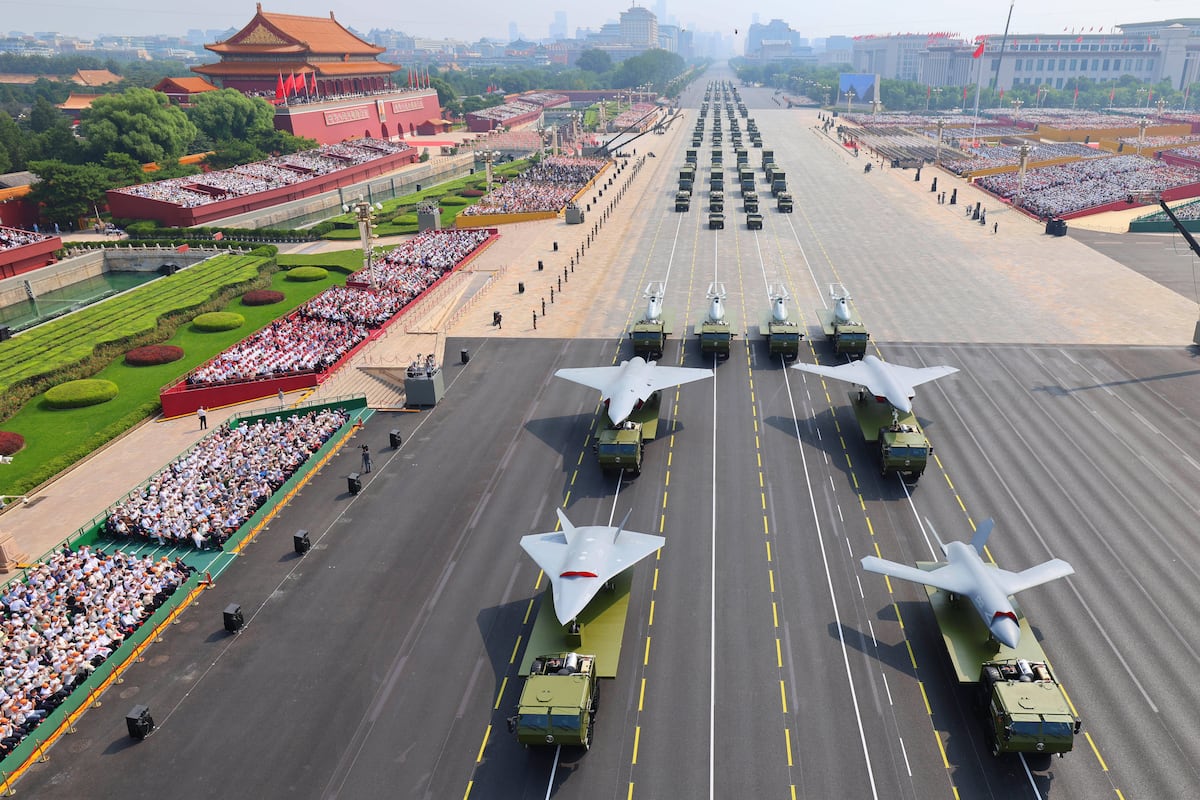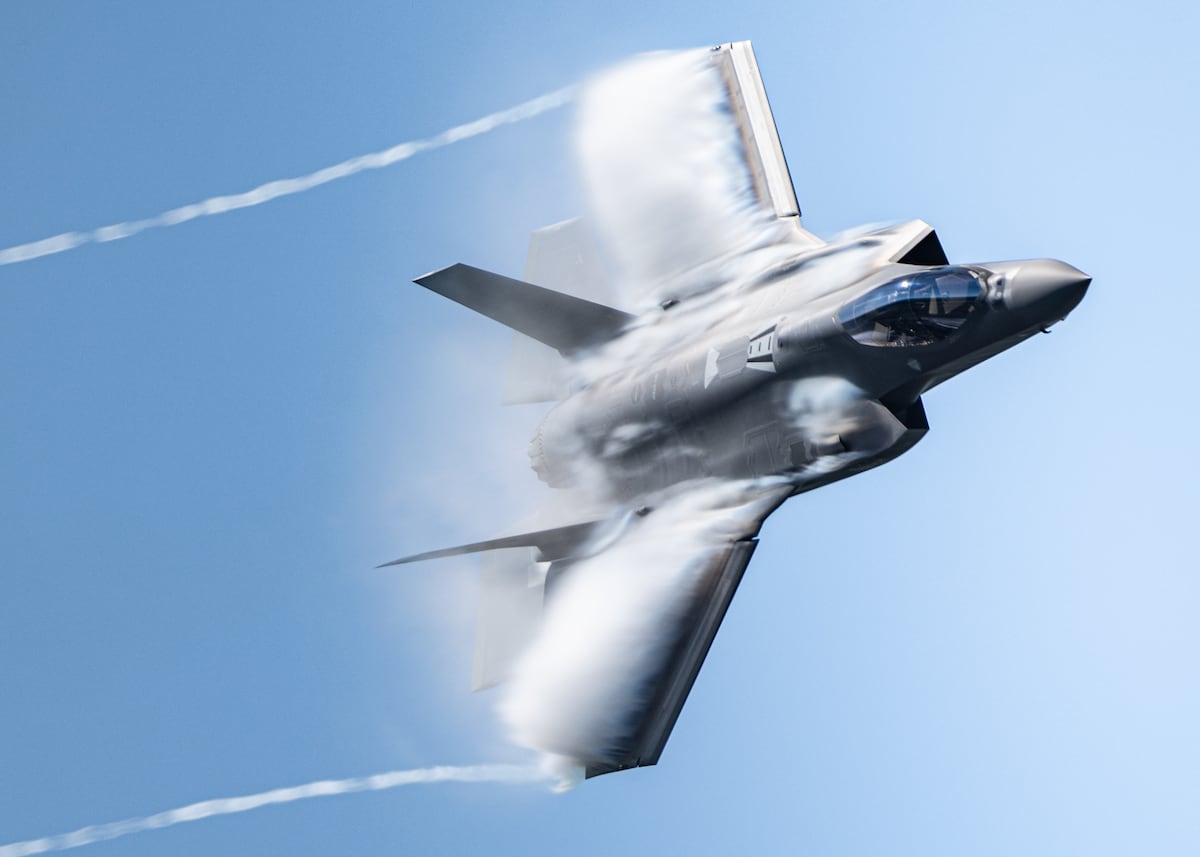HUNTSVILLE, Ala.—Future AI-enabled drone and missile defenses will need to not only rapidly detect large numbers of drones and missiles, but also be accurate and trustworthy enough to take them out without having to involve a human, the head of the Pentagon’s joint missile defense command said Tuesday.
“The ability to accurately discriminate the threat, positively ID the threat, and then have the system auto-select the right interceptor or non-kinetic capability to defeat the threat is where we would definitely like to go,” Lt. Gen. Sean Gainey, the head of U.S. Army Space and Missile Defense Command and Joint Functional Component Command for Integrated Missile Defense, said Tuesday at the Space and Missile Defense Symposium here. “We will push the boundaries on that, because we have to.”
Recent interactions in the Middle East, plus Russia’s relentless assault on Ukraine, have shown that even smaller adversaries like Iran are able to quickly produce ever-larger swarms of drones, in addition to other missiles. While U.S. forces have shown that they can handle the current volume of threats, they are increasingly relying on expensive missiles to do so.
Taking humans out of the decision loop may sound like a brave new world of unthinking killer robots, but the technology behind autonomous defense against threats like drones isn’t actually new. The Navy has long relied on the Phalanx Close-In Weapon System to protect ships from fast-moving threats at sea. The currentPhalanx system uses radar to detect rapidly incoming objects and shoot at them without requiring human permission or input.
Of course, for a Navy ship in open water, shooting at the boat that’s barreling toward your destroyer is unlikely to result in a collateral damage catastrophe, though it is possible.
Greater autonomy is also creeping into land-based drone defense systems.
The Marine Corps has recently begun using the Marine Air Defense Integrated System, or MADIS, in training. It can fit on the deck of a ship or even a car and is equipped with 360-degree radar and electro-optic/infrared sensors and jamming technology, and it can be outfitted with missiles and guns. It also can track threats much more quickly than a human can, and then jam it electronically, launch a Stinger heat-seeking missile, or fire a 30 mm autocannon at it. In March, Anduril won a $200 million contract to upgrade MADIS with greater autonomy as well as a little hunter drone that deploys to attack the incoming threat.
Gainey said recent trends indicate that adversary drone swarms will soon be large enough to overwhelm current defenses, especially as adversaries like Russia use autonomy in drones targeting civilians.
“The reason they’re doing that is because they’re… looking at ways to evade our capabilities. And so our capabilities are evolving to be able to defeat autonomy,” he said.
The current pace of drone warfare, he said, “is driving us to look at ways how we can employ more autonomy. A lot of that’s going to happen through AI algorithms.” Increasing use of AI is “going to allow the system to better define the threat, discriminate against the threat, and process the threat,” he said.
But more important than that, he said, is employing a wider number of assets—more sensors, more intelligence, and more people—to the mission of drone and missile defense, rather than relying solely on killer robots.
Read the full article here








Leave a Reply